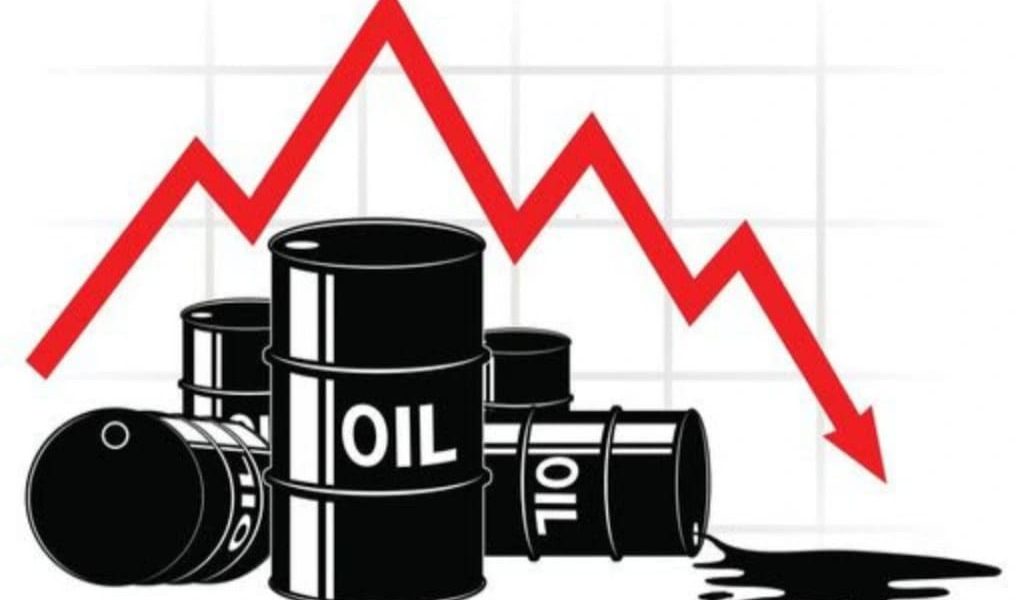Global Oil Prices Hit New Lows: Economic and Geopolitical Factors at Play
Oil prices plummeted on Friday, August 2, closing at their lowest levels since January. This sharp decline was driven by a mix of economic data from the United States and China, which cast a shadow over the global economic outlook and stirred concerns about future oil demand. Understanding the full impact of this price drop requires delving into the potential ramifications for the global economy and specific industries and considering the broader geopolitical landscape.
Brent crude futures fell by $2.71, or 3.41%, settling at $76.81 per barrel. This marked a weekly decline of 4.3%, continuing a downward trend for the fourth consecutive week. Similarly, US West Texas Intermediate (WTI) crude futures dropped by $2.79, or 3.66%, ending at $73.52 per barrel and registering a weekly loss of 4.7%. Both benchmarks experienced a drop exceeding three dollars per barrel during the trading session. The root causes of this downturn can be traced to several key factors:
The job growth in the United States slowed more than anticipated in July, while the unemployment rate rose to 4.3%. This uptick in unemployment signals potential economic instability and raises the specter of a recession. The possibility of a recession carries profound implications such as: The reduction of consumer spending, lower business investment, and increased unemployment that can all contribute to a vicious cycle of economic decline affecting various sectors from retail to manufacturing.
The economic data from China, the world’s largest oil importer, also have played a significant role in the price drop. However, weak manufacturing activity was reported not only in China, but also in the United States, Europe, and Asia. This trend increases the risk of a sluggish global economic recovery, which in turn dampens expectations for oil consumption. The situation in China is particularly concerning; June data showed a decline in imports and refinery activity compared to the previous year. This decline exacerbated worries about demand growth and contributed to the downward pressure on prices. According to the Oil Research Department of the London Stock Exchange Group, Asian crude oil imports dropped to a two-year low in July. This reduction was largely driven by a decreased demand in China and India, underscoring the fragility of the recovery in these critical markets.
To provide additional perspective, industry experts have weighed in on the situation. John Smith, an analyst at XYZ Energy, emphasized the critical role of geopolitical stability in major oil-producing regions. “Any disruption in these regions can lead to significant volatility in oil markets,” he noted. Economist Jane Doe from Global Economics highlighted the impact of slowing economies on oil demand. She explained that the slowdown in major economies, especially China and the US, is a strong indicator of reduced oil demand, that reflected the current price trends.
Another layer of complexity is added by the geopolitical landscape. On Thursday, ministers from OPEC+ countries met and decided to keep the current oil production policy unchanged. The coalition plans, to gradually reverse some of the production cuts starting in October. This decision comes amidst a backdrop of increasing tensions in the Middle East. The Iranian-backed Lebanese Hezbollah group recently announced that its conflict with Israel has entered a new phase. Despite these tensions, analysts have noted that there has been no significant disruption to oil supplies from the region. However, prices fell to their lowest levels in several weeks following the killing of senior leaders from Hezbollah and the Palestinian Islamic Resistance Movement (Hamas). This incident raised fears of a broader conflict that could potentially disrupt oil supplies in the future. The drop in oil prices has far-reaching implications for the global economy. For one, it can provide some relief to consumers and businesses by reducing the cost of fuel and energy. This can lower operational costs for industries heavily reliant on energy, such as transportation and manufacturing. However, it also reflects a weakening demand, which can be a harbinger of broader economic challenges.
The signal of a possible recession is particularly concerning. When job growth slows and unemployment rises, it can lead to decreased consumer confidence and spending. This, in turn, can reduce demand for goods and services, creating a ripple effect across the economy. Lower demand can lead to lower production, which further impacts employment and investment, creating a feedback loop that can be difficult to break. In the financial markets, the possibility of a recession can lead to increased volatility. Investors may become more risk-averse, pulling back from equities and moving into safer assets like bonds. This shift can lead to decreased stock prices and increased bond prices, which can affect interest rates and borrowing costs.
Moreover, the impact on the oil industry itself is significant. Lower prices can squeeze the profit margins of oil companies, leading to reduced investment in exploration and production. This can have long-term implications for supply, particularly if prices remain low for an extended period. Smaller companies, in particular, may struggle to stay afloat, leading to consolidation in the industry. Looking ahead, the path of oil prices will be influenced by a range of factors. Economic data from major economies will continue to play a critical role, as will developments in the geopolitical landscape. Any further escalation of tensions in the Middle East, for example, could quickly reverse the current price trends by raising concerns about supply disruptions. Additionally, decisions by OPEC+ and other major producers will be closely watched for any changes in production policies.
In conclusion, the recent drop in oil prices reflects a confluence of economic and geopolitical factors. Slowing job growth in the United States, weak manufacturing activity in key markets, and concerns about demand growth in China have all contributed to the downward pressure on prices. The potential for a recession adds another layer of complexity, with far-reaching implications for the global economy and financial markets. As always, the situation remains fluid, and the coming months will likely bring further developments that will shape the future trajectory of oil prices.






